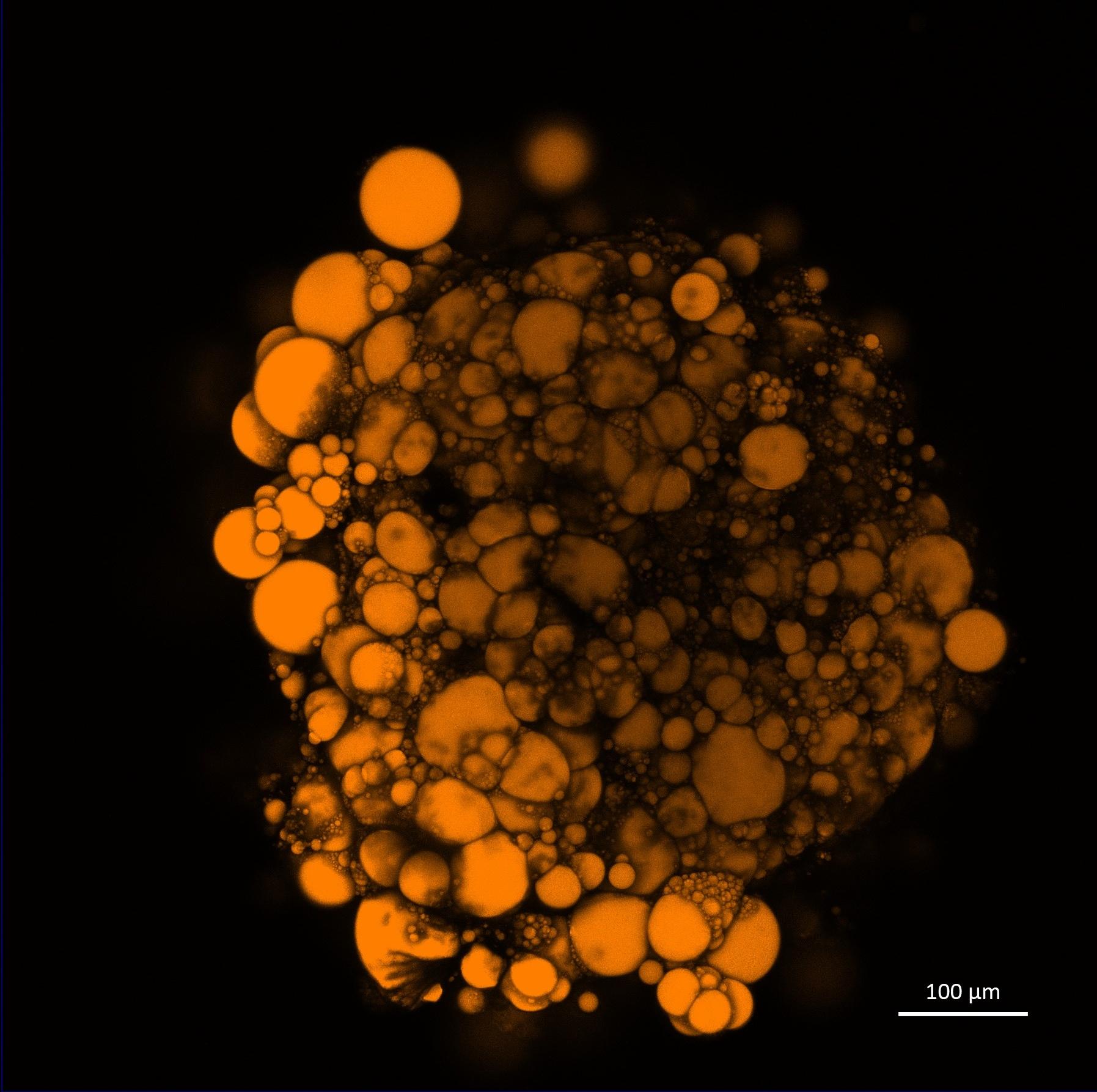3D cell culture
Cell culture has been historically used to answer biological questions. However the questions that shall be answered are becoming too complex for the classical 2D cell culture model since cells growing on a petri dish are lacking the proper architecture they would feature in a complex organism. Contact to other cells is reduced to a minimum. In this form issues like cell-cell contact, cell-cell communication as well as the organization of multiple different cell types and their interactions cannot be adequately mimicked. To overcome these limitations we established three-dimensional adipose tissue organoids (Taylor et al. 2020). The 3D-cell culture is performed in a 96-well plate format and is easy accomplished, offering the potential for high throughput experiments. From an ethical point of view this model can be an alternative to some in vivo experiments and will help to reduce numbers of required animal experiments. The formation of adipose organoids will potentially help in the future to answer questions regarding immunity, obesity, diabetes and many more pathological conditions connected to metabolic related diseases.





